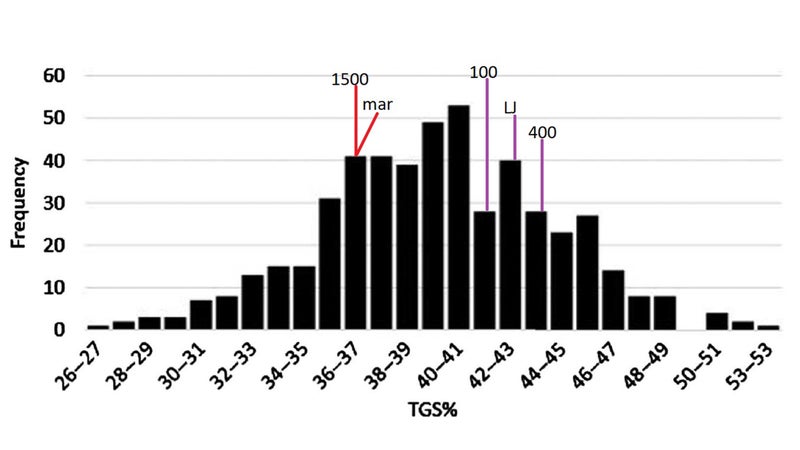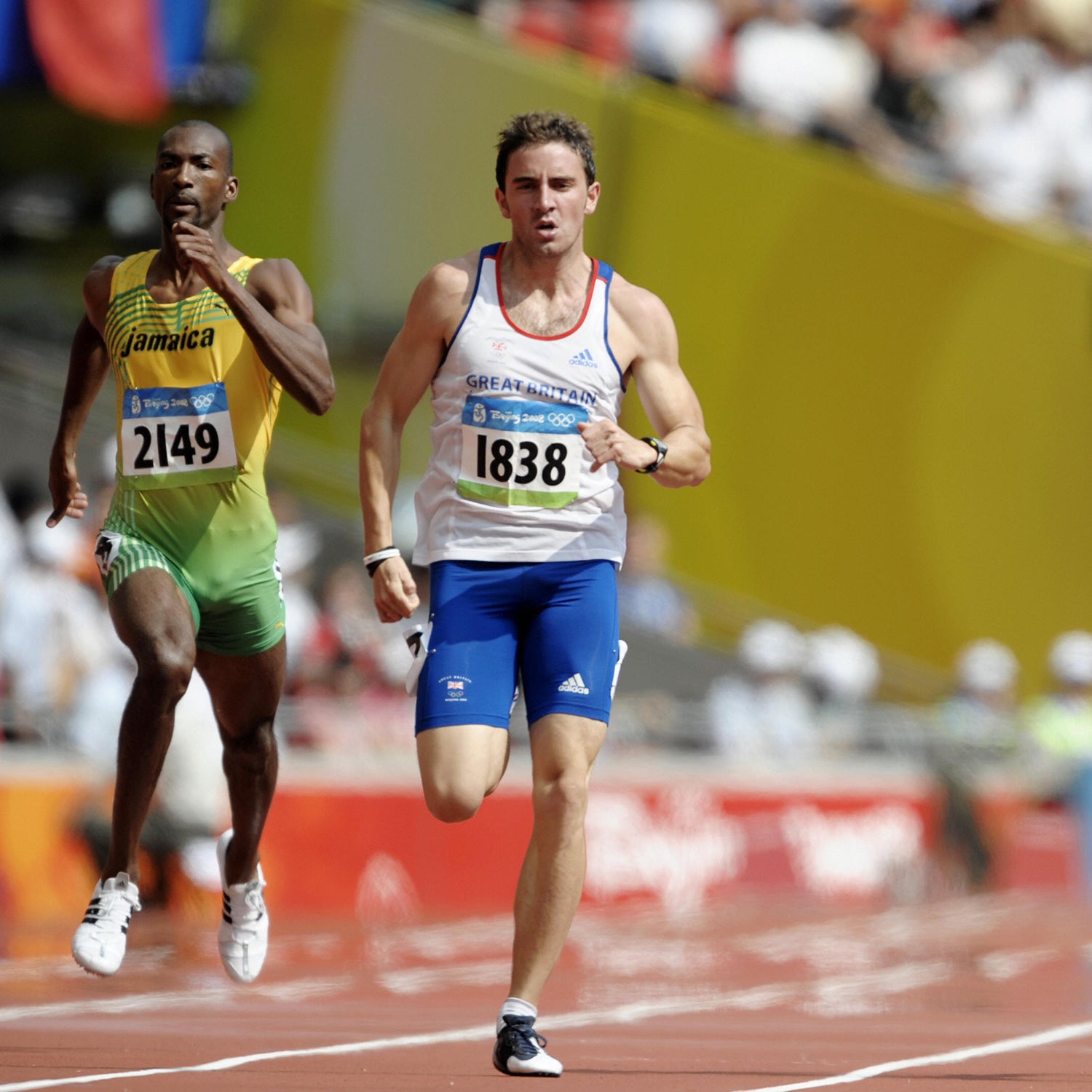Back in 2008, The New York Times ran about the launch of a genetic testing service that promised to tell you if your kid was destined for athletic stardom. “[I]f you wait until high school or college to find out if you have a good athlete on your hands, by then it will be too late,” the president of Atlas Sports Genetics said. “We need to identify these kids from one and up, so we can give the parents some guidelines on where to go from there.”
Since then, the scientific community��has been pretty much unanimous in dismissing this perspective as a bunch of crap. In 2015, for example, two dozen of the world’s leading sports genetics researchers published in the British Journal of Sports Medicine affirming that “genetic tests have no role of play in talent identification.” As far as I can tell, Atlas has gone out of business.
It’s not that genes don’t affect your athletic potential. Quite the opposite, as books like David Epstein’s illustrate. But any single gene—Atlas was looking at one called ACTN3—has a negligible effect on athletic potential. Even for a simple trait like height that’s clearly influenced by genes, the most recent estimate is that 9,900 different gene variants combine to explain 40 percent of person-to-person variation in height.
Still, science marches on. Studies have now identified dozens of genes associated with speed/power and endurance performance. And the number of companies offering direct-to-consumer sports genetic testing continues to mushroom, according to , from around 20 in 2013 to nearly 70 in 2019. So researchers decided to try a real-world case study: they tested the DNA of five Olympic athletes and compared them to 500 regular people, to see if the latest genetic research could have predicted their success. The results appear .
One of the fun details of this study is that they openly identified the athletes, all of whom are British track and field Olympians:
- Andrew Steele, a 44.94 400-meter runner and Olympic 4×400-meter medalist
- Greg Rutherford, an Olympic gold- and bronze-medalist in the long jump
- Craig Pickering, a 10.14 100-meter runner and World Championships 4×100-meter medalist
- Tom Lancashire, a 3:33.96 1,500-meter runner
- Andrew Lemoncello, an 8:22.95 steepler and 2:13:40 marathoner
Pickering is also the paper’s first author: he led the study as part of his doctoral studies under the supervision of John Kiely of the University of Central Lancashire’s Institute of Coaching and Performance. He also worked at a genetic testing company called DNAFit—more on them below—while leading the study (he left in 2019, and has since taken a talent-development role with Athletics Australia).
The genetic test looked at 48 genetic variants identified in previous studies as being associated with speed-power success and 64 variants associated with endurance success. For each variant, subjects were assigned two points if they had two copies of the “good” variant, one point for one copy, and zero points for no copies. Total scores were calculated for speed-power and endurance based on the percentage of points obtained as a fraction of the total available. For example, the 48 speed-power variants offer a total of 96 points; an athlete with a total of 48 points would have a speed-power score of 50 percent.
The results were compared to a control group of 503 white Europeans, since the athletes all had mostly white European ancestry (though Lancashire’s mother is Mauritian).
At first glance, the speed-power results are encouraging. The three speed-power athletes have the highest results, with Steel at 44.8, Rutherford at 43.8, and Pickering at 42.7. The two endurance athletes have lower numbers, both coming in at 37.5. The average for the control group is 39.4, which is lower than the speed-power stars, as you’d expect, but still higher than the speed-challenged endurance stars.
But the picture is much murkier when you look at the full distribution of results in the control group, which is shown in the histogram below. The vertical bars represent how many people scored within a given range: just over 50 people scored between 41 and 42, for example. I’ve sketched in the rough positions of the five Olympians (indicated by event). Now the test scores don’t look all that useful after all. A total of 68 people in the control group scored higher than all the Olympic speed-power athletes!

The train veers even further off the track when you look at the endurance scores. Once again, the control group has plenty of people with seemingly better endurance genes than the endurance Olympians. Even worse, all three of the speed-power athletes (with between 43.8 and 47.7 points) outscore the endurance athletes (with 39.8 to 42.2 points) for endurance potential. Rutherford did notch last year, but that doesn’t quite measure up to his Olympic long jump title.
OK, point made. This genetic test would have been somewhere between useless and counterproductive if these five athletes had taken it as teenagers (or worse, as toddlers). And none of them needed to take a test to reveal their athletic potential: they all won national or international titles as teenagers. What sports scientist Carl Foster told David Epstein in The Sports Gene remains true: “If you want to know if your kid is going to be fast, the best genetic test right now is a stopwatch. Take him to the playground and have him face the other kids.”
So where does the field go from here? When I asked Pickering about the study, he suggested that there are two competing hypotheses: either genetic tests for talent ID are useless in principle, or we simply need better genetic tests. At this point, I don’t think we can rule out either hypothesis—but whatever the future holds, it’s clear we’re nowhere near having a useful test right now.
I was also curious what DNAFit thought about the results, since they provided gene tests for the study and employed Pickering while he was working on it (though the study itself was separate from his employment). But there’s less of a contradiction than I thought. DNAFit’s has always rejected the idea of trying to identify future stars: their first rule is to refuse to test anyone under 18, and their second rule is not to use genetic testing for talent identification or prediction of sporting ability.
Instead, what DNAFit and other similar companies sell is the idea that by knowing your DNA, you can figure out what sort of training—power versus endurance, for example—you’ll respond best to, and what sort of injuries you might be especially susceptible to. The claim about training prescription, too, remains very controversial and was rejected by the 2015 scientific consensus statement I mentioned above. But (as I discussed in ) it’s more plausible than talent identification, and nothing in the new study contradicts that idea.
I’d love to wrap up by saying that this study proves that Olympic athletes are genetically no different from the rest of us, and that the road to the top is all about hard work and positive thinking. But I don’t think that’s true. Talent and trainability are undoubtedly written in our genes, but in ways that are endlessly nuanced and unfathomably complex. Success and failure only look predetermined in hindsight—and even then, as this study illustrates, hindsight remains pretty murky. The only way to find out how fast you can be is to give it everything you’ve got. I, for one, hope it stays that way.
For more Sweat Science, join me on and , sign up for the , and check out my book .


